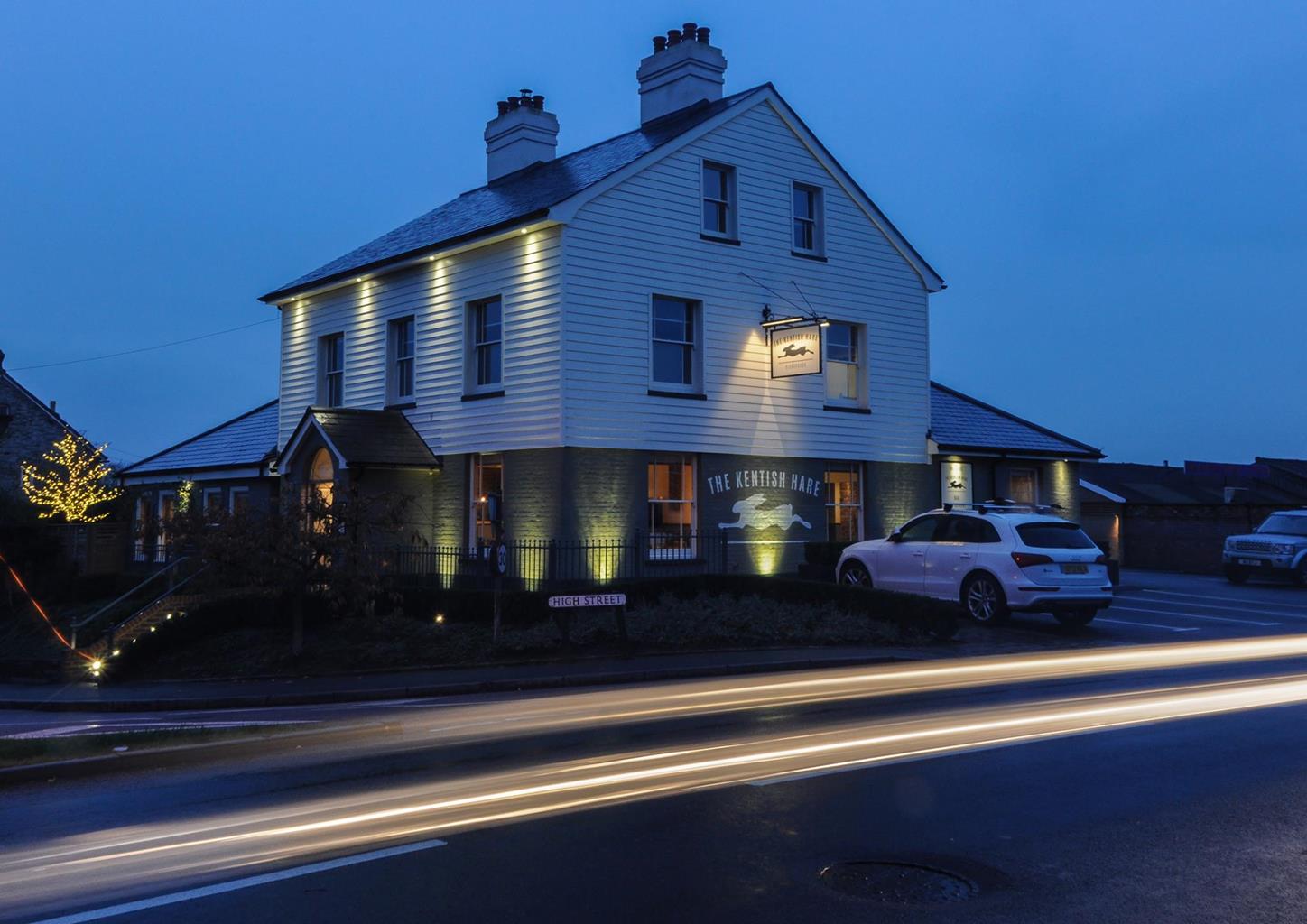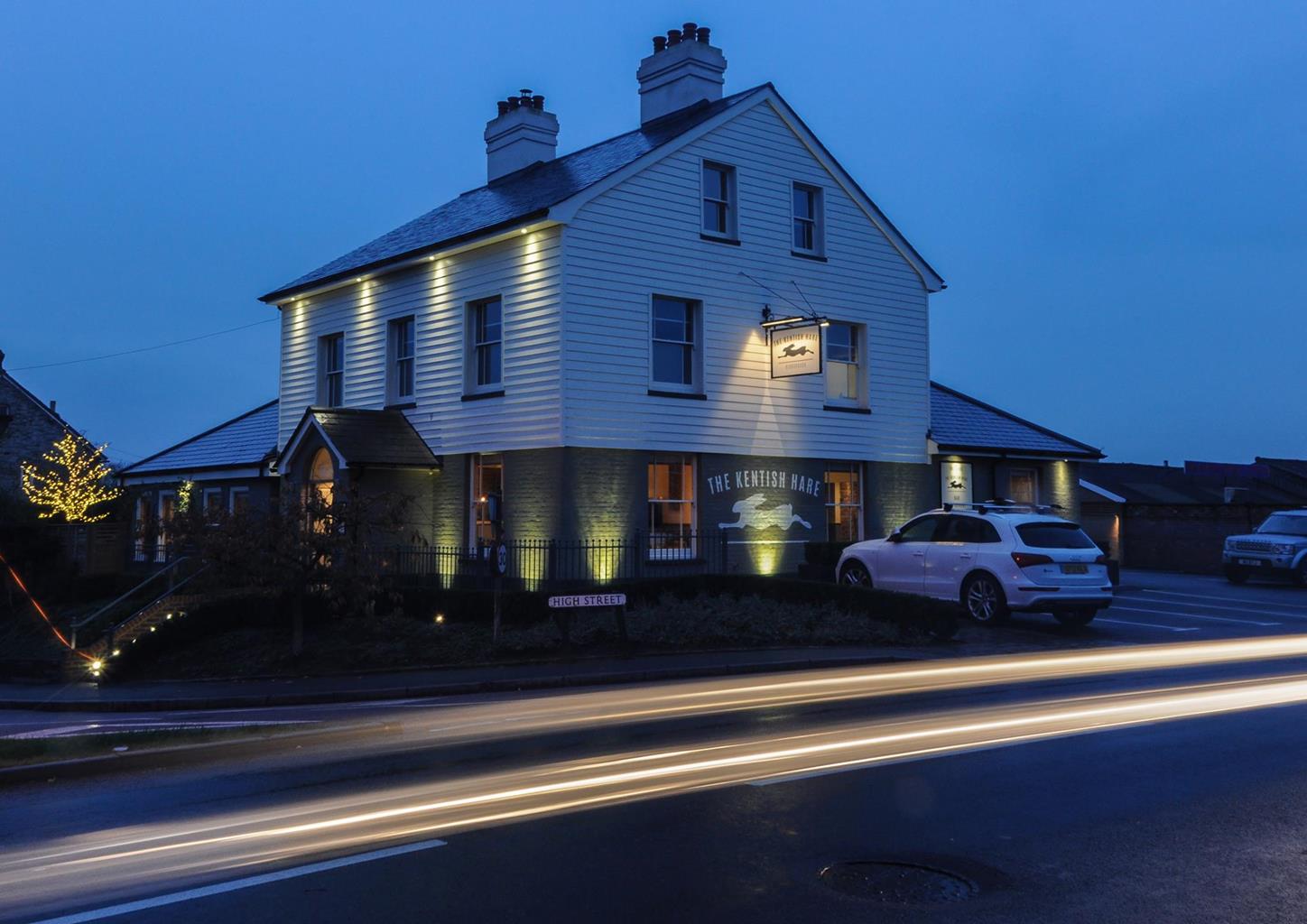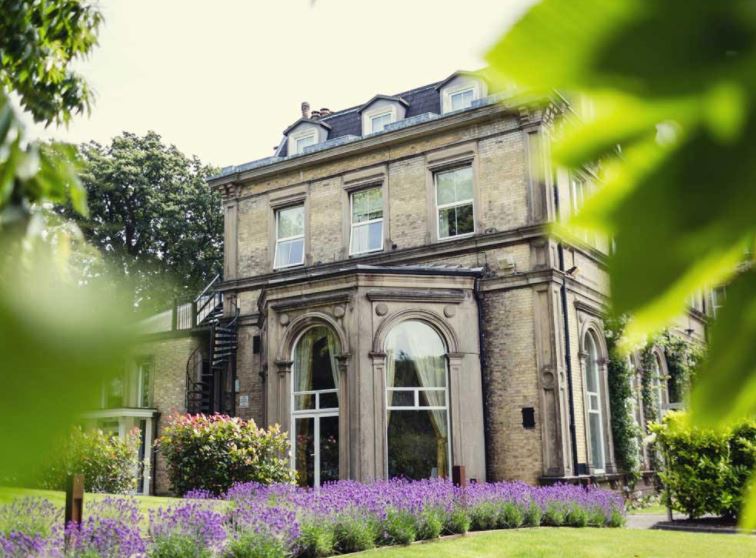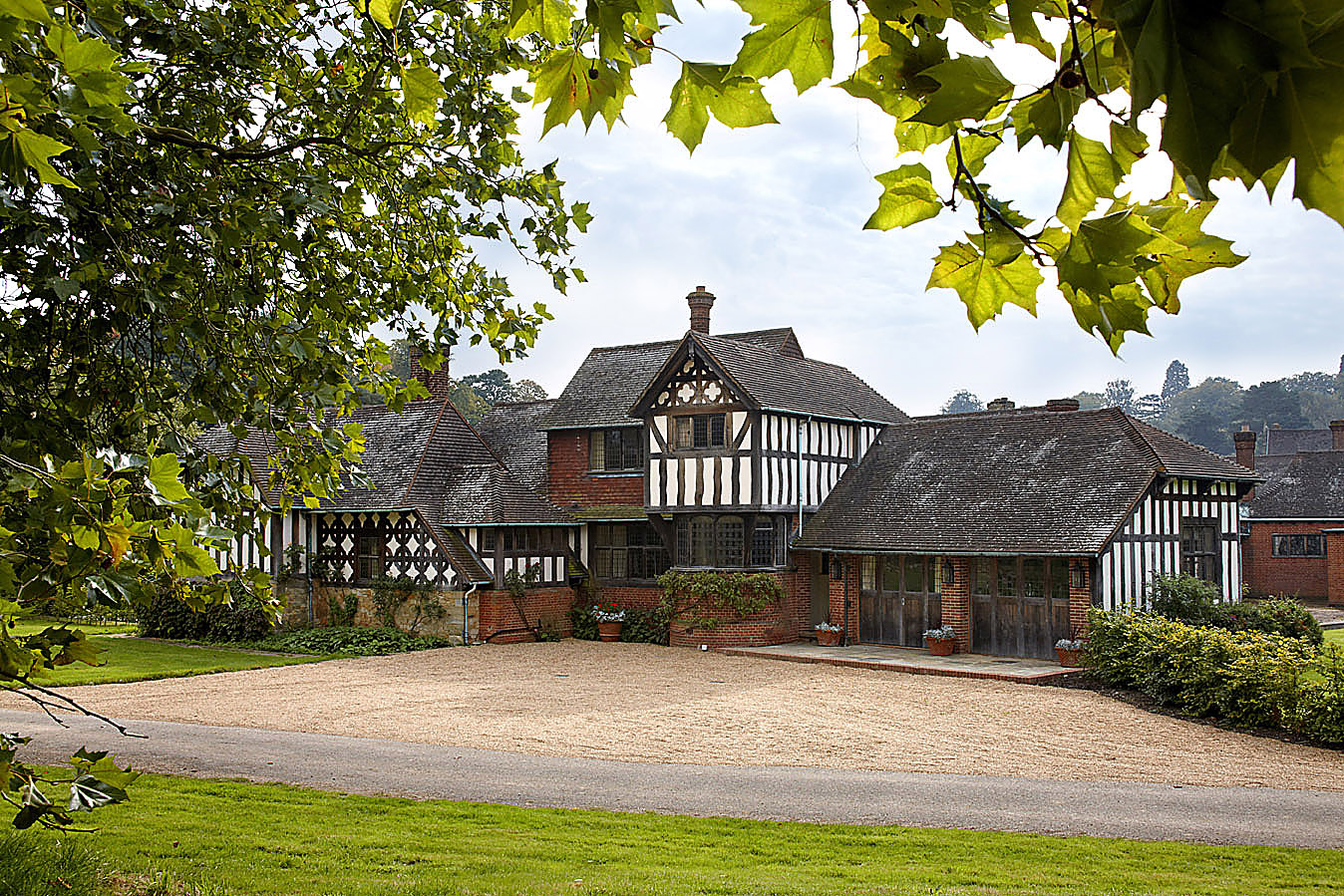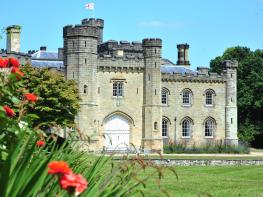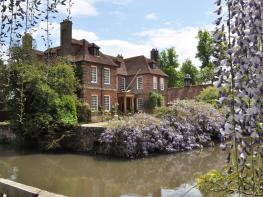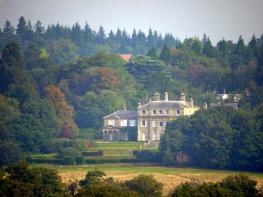Dating back to 1903, Medley Court is a luxurious property with the appearance of a Tudor house,…
Through parkland at Penshurst

4 miles (6.4kms)
About the walk
From the very start of this walk you are rewarded with wonderful views of Penshurst Place, one of the finest medieval manor houses in England. Your route takes you through the lush surrounding parkland, down an avenue of mature trees, then along the grassy banks of the Medway, before you finally pass the house once again.
Penshurst Place is not just an extremely handsome building, it is also steeped in history. Built in the 14th century, the house has been home to many of England's most notable and colourful characters. They include Humphrey, Duke of Gloucester (1391–1447) and brother of Henry V, who founded the Bodleian Library at Oxford; Edward Stafford, 3rd Duke of Buckingham (1478–1521), who was beheaded by Henry VIII – who then took Penshurst Place for himself; Sir William Sidney (1482–1554), who distinguished himself in battle at Flodden Field and was gifted the property by Edward VI; and his descendent Algernon Sidney (c.1622–1683), a Republican and supporter of Oliver Cromwell. At the Restoration Algernon was abroad and, feeling it was unsafe to return to live in England, travelled throughout Europe for many years. He eventually returned to Penshurst in order to see his dying father, but unfortunately he was still a marked man and was eventually arrested on trumped up charges by Charles II and beheaded.
Most notable of all these residents was Sir Philip Sidney who was born here in 1554. A poet, soldier and statesman he was one of those people who seemed to do everything well. He was gifted at languages, well read, athletic, a good dancer, witty, handsome, popular – an all round good egg. He was also, for a time, Elizabeth I's favourite courtier and she was reputedly so fond of him that she refused to let him sail to America with Sir Francis Drake – in whose work Sidney was very interested. His poetry was inspired by unrequited love – he was forbidden to marry the woman he really loved – and by the beautiful countryside around Penshurst.
However, like many idols, it was only after his death that Sir Philip Sidney was established as an heroic figure. He was badly wounded fighting the Spanish and was brought some water to relieve his thirst. But he saw another wounded soldier being carried past and gave it to him instead saying 'thy necessity is yet greater than mine'. Sidney died a few weeks later aged 32. His loss was felt so greatly that for months it was considered improper to appear at Court, or in the City, in light coloured clothing.
Walk directions
Walk up Penshurst Road away from the village and take the footpath right through a gate. There are great views of Penshurst Place almost immediately and it's well worth a taking a photo. The house dates from 1341 and the Great Hall is a fabulous example of medieval architecture. It has a timber roof, a musicians' gallery and an open hearth. There have been some notable visitors to the house over the years: Elizabeth I danced here with Robert Edward Dudley; the Black Prince ate a Christmas dinner here, and the children of Charles I came here after their father was executed. Immediately bear left to another gate, cross the drive, go through another gate and bear slightly right across parkland, keeping lone oak trees and the lake to your right. Go through a gate in the fence and bear right to pass the lake to reach a metal gate.
The path now veers to the left and goes uphill. Go through a gate, then walk up an avenue of trees, bearing right at the top. The path levels out with good views of Penshurst Place. You are following the Eden Valley Walk, a 15-mile (24km) linear walk that traces the route of the Eden from Edenbridge to Tonbridge.
Go through a squeeze stile and keep walking ahead along a wide, grassy track lined with trees. Exit the trees and follow the path to a stile and gate, joining a track leading down to a road beside Paul's Hill House. Turn right and follow the road (care required) to a bridge.
Go through a squeeze stile and follow the waymarked Eden Valley Walk through pasture, along the side of the River Medway which is on your left. Walk by the river for about 0.25 miles (400m), then turn right, away from the water, and head across the pasture to a little bridge. Follow the footpath uphill to a stile which takes you on to a concrete track. Turn right for a few paces and then left at a junction.
Where the track curves sharp left, keep ahead to a stile, then bear left and walk down a path, with lovely views of Penshurst Place. Rejoin the concrete track and walk past Penshurst Place to go under an archway, then turn right and walk back into the village.
Additional information
Broad tracks, short section on busy road, several stiles
Leafy parkland with views of Penshurst Place
Good, although on lead, some dogs might not like unusual squeeze stiles
OS Explorer 147 Sevenoaks & Tonbridge
On-street parking in Penshurst Road, also car park for Penshurst Place
Penshurst Road
WALKING IN SAFETY
Read our tips to look after yourself and the environment when following this walk.
Find out more
Also in the area
About the area
Discover Kent
The White Cliffs of Dover are an English icon – the epitome of our island heritage and sense of nationhood. They also mark the point where the Kent Downs AONB, that great arc of chalk downland stretching from the Surrey Hills and sometimes known as ‘the Garden of England’, finally reaches the sea. This is a well-ordered and settled landscape, where chalk and greensand escarpments look down into the wooded Weald to the south.
Many historic parklands, including Knole Park and Sir Winston Churchill’s red-brick former home at Chartwell, are also worth visiting. Attractive settlements such as Charing, site of Archbishop Cranmer’s Tudor palace, and Chilham, with its magnificent half-timbered buildings and 17th-century castle built on a Norman site, can be found on the Pilgrim’s Way, the traditional route for Canterbury-bound pilgrims in the Middle Ages.
In the nature reserves, such as the traditionally coppiced woodlands of Denge Wood and Earley Wood, and the ancient fine chalk woodland of Yockletts Bank high on the North Downs near Ashford, it is still possible to experience the atmosphere of wilderness that must have been felt by the earliest travellers along this ancient ridgeway.
Nearby stays
Restaurants and Pubs
Nearby experiences
Recommended things to do
Why choose Rated Trips?
Your trusted guide to rated places across the UK
The best coverage
Discover more than 15,000 professionally rated places to stay, eat and visit from across the UK and Ireland.
Quality assured
Choose a place to stay safe in the knowledge that it has been expertly assessed by trained assessors.
Plan your next trip
Search by location or the type of place you're visiting to find your next ideal holiday experience.
Travel inspiration
Read our articles, city guides and recommended things to do for inspiration. We're here to help you explore the UK.

